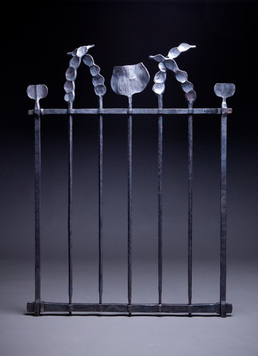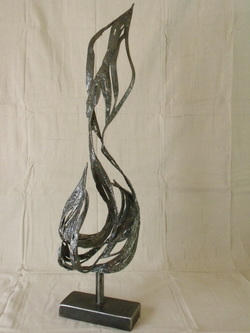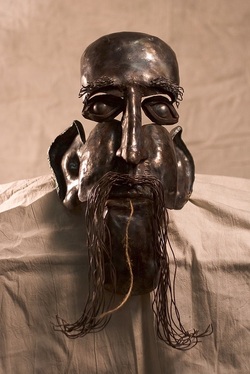TECHNIQUES
I use various techniques to shape steel and glass:
BlacksmithingSteel is heated in a forge, then shaped into the desired form over using an anvil, hammer blow by hammer blow.
To work larger metal stock, I use my mechanical 25-lb. Little Giant power hammer. Power hammers are mechanical or air-driven machines with upper and lower dies serving as the hammer and anvil. My power hammer is controlled with a foot pedal, leaving my hands free to work the metal stock. I was introduced to blacksmithing by William Bastas, an instructor at Austin Community College. |
|
Hammered SheetI use 16-gauge sheets of steel for this technique. 16-gauge looks and feels substantial yet can still be hammered 'cold' and by hand.
I cut the sheet into the roughly desired shape using a shear. Texture, depth, and final form are achieved by working the metal over a swage block and anvil with hand hammers. Metal punches are used in combination with the oxy-fuel torch for spot-heating the metal when deep furrows or details are desired. The hammered sheet pieces can then be assembled and welded together for the final assembly, such as with an oxy-fuel torch. Barry George introduced me to this technique. |
Stained glass: Flat, fused, slumped, blownI use stained glass as diffusers in my sculptural lighting. Stained glass comes in an endless variety of colors and patterns.
Stained glass can be cut to size for a piece. It can also be fused or slumped in a kiln. Fusing involves melting glass together. Slumping involves draping glass over or into a mold. Metal or clay forms are used to make custom-shaped diffusers. I contract with local glass blowers when necessary. |




